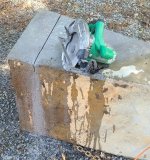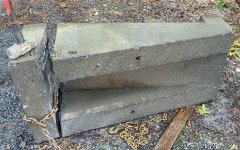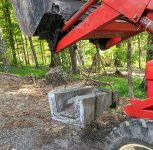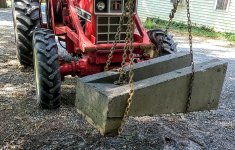Good Morning Folks,
I have a culvert that was installed (I assume) when the home was built, in 1991. In attempting to prep for extending the culvert to widen the driveway a bit, I found the existing culvert was… suboptimal. For starters, it had been completely covered with dirt, leaves, etc. Once I uncovered the end, I found the old, concrete pipe was broken and FULL of mud. When I tried to uncover it to see if I could just cut off the broken bit, and extend it, I found that someone had broken a 5-foot section off of the main culvert pipe, put a “bend” in the line, and “joined” the two sections by putting a piece of sheet metal over it.
Well, I removed the 5-foot section and the “joint” metal. Now I have a jagged, concrete pipe end sticking out about 12” from under the concrete driveway. After cleaning the existing pipe, how would you recommend that I attach a HDPE culvert to this concrete pipe to repair and extend the culvert?
Thanks
I have a culvert that was installed (I assume) when the home was built, in 1991. In attempting to prep for extending the culvert to widen the driveway a bit, I found the existing culvert was… suboptimal. For starters, it had been completely covered with dirt, leaves, etc. Once I uncovered the end, I found the old, concrete pipe was broken and FULL of mud. When I tried to uncover it to see if I could just cut off the broken bit, and extend it, I found that someone had broken a 5-foot section off of the main culvert pipe, put a “bend” in the line, and “joined” the two sections by putting a piece of sheet metal over it.
Well, I removed the 5-foot section and the “joint” metal. Now I have a jagged, concrete pipe end sticking out about 12” from under the concrete driveway. After cleaning the existing pipe, how would you recommend that I attach a HDPE culvert to this concrete pipe to repair and extend the culvert?
Thanks





